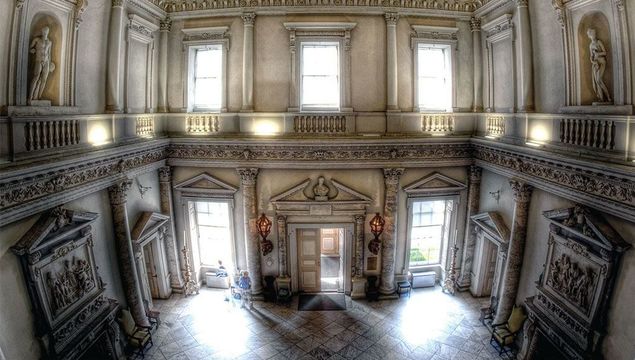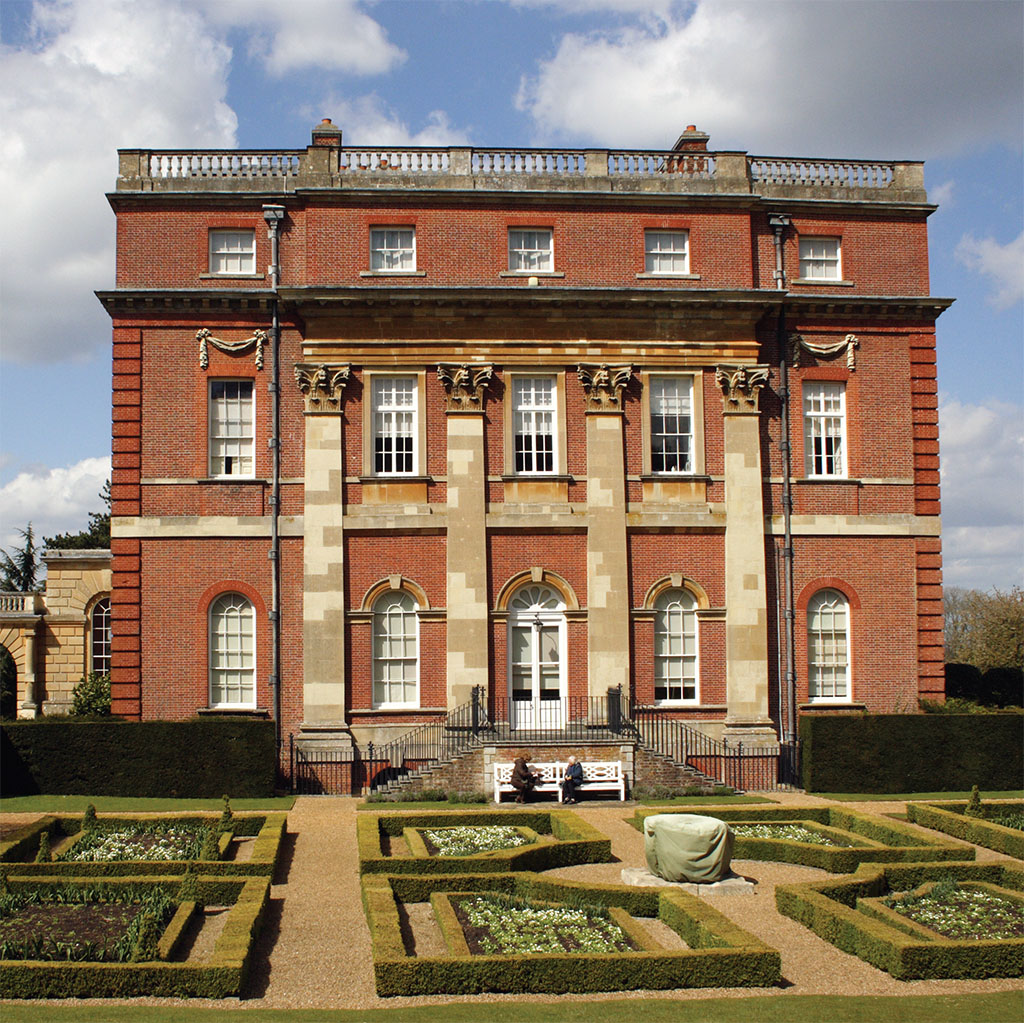
A superb example, built by the Earls of Onslow, was designed especially to maintain the aristocratic peoples' comfortable way of life... and it shows.
A superb example, built by the Earls of Onslow, was designed especially to maintain the aristocratic peoples' comfortable way of life... and it shows.
The drawing-room scenes of Georgian and Regency England so beloved by fans of Jane Austen were largely played out in old houses. All the houses we have looked at through the centuries in our Ye Old House have been modified and rebuilt over the generations to adapt to changing lifestyles. By the late 18th century, society had evolved a good deal from the days when all social ranks slept together in the Great Hall. The upstairs, downstairs world had arrived. Servants were out of sight and out of mind. For the first time, houses were built for the purpose of keeping them that way.
A new house of the day would be built with admirable simplicity and classical architecture. For the first time, symmetry became important as an aesthetic consideration. The 18th-century house would also be designed to separate the upstairs world of the aristocratic family and the infrastructure of service rooms and people maintaining their comfortable way of life.
One superb example of such a house is the 1730 mansion of the Earls of Onslow in West Clandon on the outskirts of Guildford, Surrey. Designed by Venetian architect Giacomo Leoni, like Wilton House, Clandon Park is classically Palladian in its architectural style, surrounded by Lancelot Brown landscaped gardens, formal parterre, grotto, and a sunken Dutch garden.
Read more
Among the gardens’ more unusual features is Hinemihi, a Maori meeting house that the 4th Earl of Onslow had shipped back from New Zealand in 1892 as a memento of his years there as Governor-General.
Now in the care of the National Trust, Clandon Park was home to three generations of Speakers of the House of Commons. The family ceded the house and gardens to the Trust in 1956, though the present Earl still lives in the neighborhood and takes an active interest in the property and local affairs. When the new Guildford Cathedral was built in the 1950s, the Earl of Onslow donated the beautiful hilltop campus of the Cathedral overlooking Guildford’s bustling commercial district.
Compared to many stately home visits, Clandon Park gives off an easy air of elegant simplicity. The two-story Marble Hall is perhaps the house’s most famous feature. The great hall is a formal reception arena; it’s come a long way from being the chief room in which the entire household ate, congregated, and slept. Purbeck marble and huge gilt mirrors, portraits, and marble chimneypieces by English sculptor Michael Rysbrack have replaced plank tables and open fires.
On either side of the Marble Hall, sweeping staircases lead to the principal bed chambers and suites. These are the staircases for family and guests. Behind the northern grand staircase, an unobtrusive hallway contains the bell board for summoning servants and their own considerably smaller staircase for servicing the upper floors of the mansion.

Architectural symmetry, classical proportion and clean lines became all the rage in the Georgian 18th century.
There are literally hundreds of great country homes to visit around Britain. In many cases, the collage of furnishings over the generations obscures how the house would have appeared at the time when it was built. One of the distinctive features of Clandon Park is that it houses a renowned collection of elegant 18th-century furniture. Thus, the house that visitors see is very much the Georgian home known by the 2nd Baron Onslow who commissioned it.
Perhaps no room reflects the emergent Georgian society like the dining room. The days of fellowship over a meal between lord and minions have long gone. For the ladies and gentlemen of 18th-century society, dinner was the most important event of the day—a lavish and ceremonial affair with purposes far deeper than simply ingesting sustenance. Servants and laborers might eat; the upstairs world dined. At Clandon Park, the magnificent table is set for dinner, china and silver, flowers and porcelain epergnes, as if the family and guests were soon to be called. Discretely blending into the wainscoting, a door to the back hall provides access for the butler and footmen to deliver the succession of dishes and wines from the kitchens and pantries below stairs.
Below stairs, Clandon Park has been adapted to the purposes of its public display. A good National Trust restaurant occupies the vaulted undercroft. And many of the old service quarters now house the museum of the Queen’s Royal Surrey Regiment.
When Clandon Park was at its 18th-century finest, three Speakers of the British parliament made it their residence and seat of political power—reflecting their own nobility, wealth and importance. Meanwhile, on this Western side of the Atlantic, these are the colonial years. We associate them with small, hardscrabble farm villages and log cabins along the Appalachian frontier. The English governing class certainly had a different view of the world than did the movers-and-shakers of the American 1700s. Clandon Park reflects a sterling example of the Georgian home of the landed aristocracy. At the same time, perhaps Clandon Park symbolizes the difference in historic worldviews that led our societies in different directions in 1776.
This is a great visit in the pretty Surrey countryside, not far from London and the airports. It’s an easy place to make a destination—and a rewarding one.
Finding Clandon Park in West Clandon, Surrey
Clandon Park is on the A247, east of Guildford. It is easily accessible, just a few minutes drive from junction 10 on the M25. Take the A3 south a couple of miles and turn left onto the A247. Its just a mile or so to Clandon Park.
Like most National Trust properties, Clandon Park operates an eclectic schedule. The house is open 11-4 Tuesday, Wednesday, Thursday and Sunday.
www.clandonpark.co.uk
* Originally published in Jul 2016.





Comments